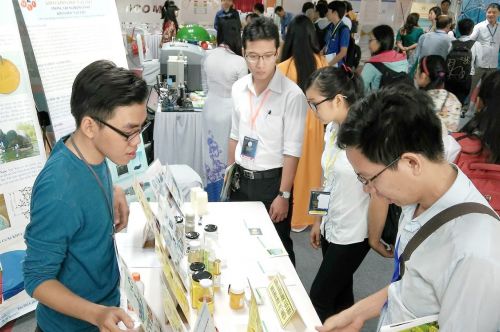Local firms stuck at bottom of smiling curve
The report is a review of Vietnam’s 2006-2016 economic performance based on the impact of Intel Products Vietnam’s US$1-billion chip assembly and test facility in HCMC on the Vietnamese economy over the past 10 years.
Since its debut 10 years ago, Intel Products Vietnam has greatly contributed to the domestic economy in terms of export, added value, job creation, human resource development, FDI promotion and change of the perception about “made-in-Vietnam” products.
However, “Intel has brought in a ship to take us around the world but we have never got on board,” Dr. Vu Thanh Tu Anh said while presenting the report of Fulbright Vietnam University in HCMC last week.
“Ten years ago, Intel chose HCMC for a new facility, instead of Bangkok (Thailand), Dalian (China) and Chennai (India). It was not because our incentives were better than other countries. Large corporations with a long-term vision come because of not just incentives but also market potential, human resources, high economic growth and political stability.”
Anh said Intel has reaped success in Vietnam and that Vietnam has also succeeded in attracting other large corporations like Samsung, Canon, LG and Fuji. “But our success is not complete.”
This is because local manufacturers are still involved in the stages where low value is created. Intel’s chipsets are labeled “Made in Vietnam” but the percentage of domestically generated value is woefully insignificant.
Local firms mainly provide Intel, Samsung and other multinationals with what cannot be imported, such as infrastructure, power, water and unskilled labor. They can supply some raw materials and indirect parts.
Domestic companies do not supply direct materials that have high added value and require skills and knowledge in the production process, such as capacitors, motherboards, monitors, and chassis.
Thanks to Intel and Samsung, the proportion of high-tech products in the basket of Vietnamese export items reached 27% last year. However, local enterprises are only involved in processing, assembly and testing activities.
Thus, domestic manufacturers have remained at the bottom of the smiling curve though big international firms have been present here in the country for decades.
The smiling curve is a graph initiated in 1992 by the founder of Acer, Stan Shih. The horizontal axis of the graph represents “stage of production”, composed of research, development, design, trademark and copyright on the left, processing and assembly in the middle, and distribution, marketing, sales, service and aftermarket on the right, while its vertical represents “profit”.
The position in the middle of the graph has the lowest profit. The implication of the smiling curve is that to boost profits, businesses must avoid focusing on processing and assembly, and instead constantly move towards the two sides of the graph.


